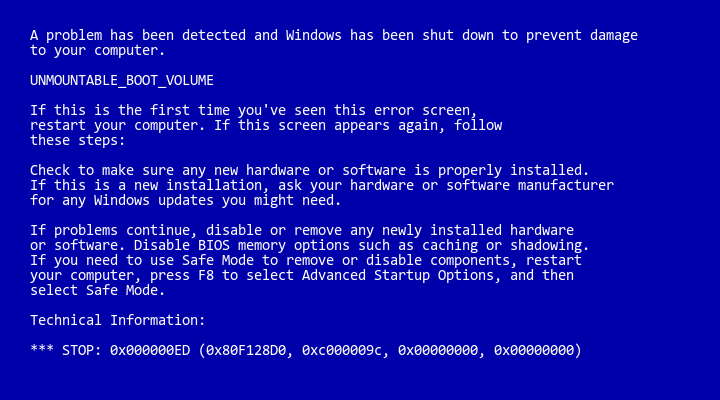Blue Screen Error or Stop error is common in windows. It is also known as the Blue Screen of Death (BSOD), can be a frustrating experience. The error message almost never clearly states what is wrong, and they seem to strike at random.
 In Windows 8 Blue Screen of Death (BSOD) appear with a big smiley icon : ( and a Text showing to restart your computer. If this Blue Screen Error continues it results in loss of Application data.
In Windows 8 Blue Screen of Death (BSOD) appear with a big smiley icon : ( and a Text showing to restart your computer. If this Blue Screen Error continues it results in loss of Application data.
In Windows 7 Blue Screen of Death (BSOD) may like this..
 In Windows 8 Blue Screen of Death (BSOD) appear with a big smiley icon : ( and a Text showing to restart your computer. If this Blue Screen Error continues it results in loss of Application data.
In Windows 8 Blue Screen of Death (BSOD) appear with a big smiley icon : ( and a Text showing to restart your computer. If this Blue Screen Error continues it results in loss of Application data.In Windows 7 Blue Screen of Death (BSOD) may like this..
Why does Blue Screen Error occurs:
- Any Hardware Failure In the System
- Using Outdated Version of Drivers
- Due to Virus in System
- Failure of RAM and Power Supply Problems
How To Fix IT:
Step 1: Check for any problem in Drivers:
In most of the cases the problem occurs only because of the Drivers, so first update your Windows Operating System Drivers.
Download a software called SlimDrivers Which automatically detects the drivers and update them.
Step 2: Install Best antivirus and Scan your Complete System
Step 3: Run Disk Defragmenter and Error Checking on your Hard Drive.
Step 4: Test your RAM. A common culprit in system crashes is a bad stick of RAM. When RAM fails, it causes the system to become unstable. You can test your RAM by using a program called “memtest86”. This program is available for free online, and is run by burning it to a bootable CD.
- Reboot your computer and run the program. The memtest software will automatically begin running tests on your computer’s RAM. This may take several minutes to complete. For best results, allow several passes of the test to be completed. Memtest will run indefinitely until you stop it yourself.
Step 5: Download any Registry cleaner software to scan and download your registry. Some of them are:
- CCleaner
- CleanMyPc
Step 6: Check for any change in Hardware or any loose connections in cabinet.
Finally Restart your system and Run it in Safe Mode.
To Run your PC in Safe Mode press F8 button at the time of booting (may vary according to your PC).


No comments:
Post a Comment